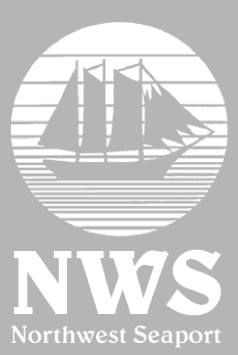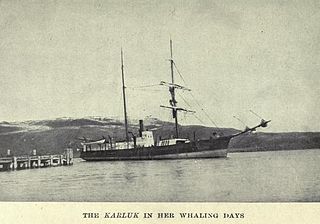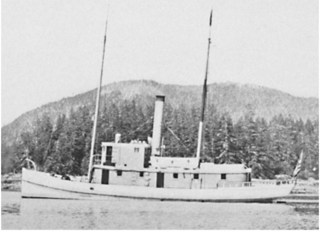
The last voyage of the Karluk, flagship of the Canadian Arctic Expedition of 1913–16, ended with the loss of the ship in the Arctic seas, and the subsequent deaths of nearly half her complement of 25. In August 1913, Karluk, a brigantine formerly used as a whaler, became trapped in the ice while sailing to a rendezvous point at Herschel Island. After a long drift across the Beaufort and Chukchi seas, in January 1914 the ship was crushed and sunk. In the ensuing months, the crew and expedition staff struggled to survive, first on the ice and later on the shores of Wrangel Island. In all, eleven men died before rescue. The Canadian Arctic Expedition was organised under the leadership of Canadian anthropologist Vilhjalmur Stefansson, and had both scientific and geographic purposes. Shortly after Karluk was trapped, Stefansson and a small party left the ship, stating that they intended to hunt for caribou. However, the ice carried Karluk westwards, far from the hunting party who found it impossible to return to the ship. Stefansson reached land and then devoted himself to the expedition's scientific objectives, leaving the crew and staff on board the ship under the charge of its captain, Robert Bartlett. After the sinking, Bartlett organised a march across the ice to Wrangel Island, 80 miles (130 km) away. Conditions were difficult and dangerous; two four-man parties were lost before the island was reached.

Northwest Seaport Maritime Heritage Center is a nonprofit organization in Seattle, Washington dedicated to the preservation and interpretation of Puget Sound and Northwest Coast maritime heritage, expressed through educational programs and experiences available to the public aboard its ships. The organization owns three large historic vessels docked at the Historic Ships' Wharf in Seattle's Lake Union Park; the tugboat Arthur Foss (1889), Lightship 83 Swiftsure (1904), and the halibut fishing schooner Tordenskjold (1911). These vessels are used as platforms for a variety of public programs, ranging from tours and festivals to restoration workshops and vocational training.

The second USS Albatross, often seen as USFC Albatross in scientific literature citations, was an iron-hulled, twin-screw steamship in the United States Navy and reputedly the first research ship ever built especially for marine research.

SS Princess Sophia was a steel-built passenger liner in the coastal service fleet of the Canadian Pacific Railway (CPR). Along with SS Princess Adelaide, SS Princess Alice, and SS Princess Mary, Princess Sophia was one of four similar ships built for CPR during 1910-1911.

USCGC Balsam (WLB-62) was a Cactus-class seagoing buoy tender (WLB) in the United States Coast Guard. She operated in the Pacific Ocean during World War II, then saw service along the United States West Coast, Hawaii, and Alaska. After her decommissioning in 1975, she was repurposed as a crab catcher-processor and is active in Alaskan fisheries as F/V Baranof.

The King and Winge Shipbuilding Company was an important maritime concern in the early 1900s on Puget Sound. The shipyard was located at West Seattle. The owners were Thomas J. King (1843–1925) and Albert M Winge. King was born in Boston and learned to build ships under the famous Donald McKay. He came to Puget Sound in about 1880, and worked in the shipyards of Hall Bros. and T.W. Lake before starting his own shipyard with Winge. King’s partner, Albert L. Winge was a native of Norway.

USC&GS Yukon was a schooner that served as a survey ship in the United States Coast Survey from 1873 to 1878 and in its successor agency, the United States Coast and Geodetic Survey, from 1878 to 1894. She was the pioneering Coast Survey ship in many of the waters of the Territory of Alaska, including the Bering Sea and the western Aleutian Islands, and she also operated extensively in California and Washington. She later entered commercial service as Elwood and was wrecked in 1895.

Christian Theodore Pedersen was a Norwegian-American seaman, whaling captain and fur trader active in Alaska, Canada, and the northern Pacific from the 1890s to the 1930s. He was called "one of the canniest old skippers in the western arctic" by a contemporary.

Olaf Swenson was a Seattle-based fur trader and adventurer active in Siberia and Alaska in the first third of the 20th century. His career intersected with activities of notable explorers of the period, and with the Russian Civil War. He is credited with leading the rescue of the Karluk survivors from Wrangel Island in 1914. According to historian Thomas C. Owen, Swenson's "practicality and zest for adventure made him an ideal entrepreneur on the arctic frontier..."

The Thomas Corwin was a United States revenue cutter and subsequently a merchant vessel. These two very different roles both centered on Alaska and the Bering Sea. In 1912, Frank Willard Kimball wrote: "The Corwin has probably had a more varied and interesting career than any other vessel which plies the Alaskan waters."

Karluk was an American-built brigantine which, after many years' service as a whaler, was acquired by the Canadian government in 1913 to act as flagship to the Canadian Arctic Expedition. While on her way to the expedition's rendezvous at Herschel Island, Karluk became trapped in the Arctic pack ice and, after drifting for several months, was crushed and sank in January 1914. Of the 25 aboard, eleven died, either during the attempts to reach land by marching over the ice, or after arrival at the temporary refuge of Wrangel Island.

USRC Tahoma, was a steel-hull flush deck cutter that served in the United States Revenue Cutter Service from 1909 to 1914 with the Bering Sea Patrol and was the sister ship to the USRC Yamacraw.

The Carrier Dove was a 4-masted schooner built by the Hall Brothers in Port Blakely in 1890. She worked in the West coast lumber trade and in fishing.

HMS Boreas was a Laurel-class 22-gun post ship launched in 1806. She was wrecked off Guernsey in the Channel Islands on 28 November 1807 with the loss of most of her crew of 154 men.

USRC Grant was a rare, three-masted revenue cutter built in 1870 and 1871 by Pusey & Jones Corporation in Wilmington, Delaware. She served the United States Revenue Cutter Service in both the Atlantic and Pacific preventing smuggling and protecting shipping. At the outbreak of the War with Spain, she was ordered to cooperate with the Navy 11 April 1898. Throughout the conflict, she patrolled the Pacific coast and was returned to the Treasury Department 15 August 1898. Grant continued to serve the Revenue Cutter Service in the Pacific until sold to A. A. Cragin of Seattle, Washington on 28 November 1906.

USFS Eider was an American motor schooner in commission in the fleet of the United States Bureau of Fisheries from 1919 to 1940 and, as US FWS Eider, in the fleet of the U.S. Fish and Wildlife Service from 1940 to 1942 and again in the late 1940s. She ran a passenger-cargo service between Unalaska and the Pribilof Islands, and also carried passengers, supplies, and provisions to destinations on the mainland of the Territory of Alaska and in the Aleutian Islands. She occasionally supported research activities in Alaskan waters and the North Pacific Ocean, and she conducted patrols to protect Alaskan fisheries and marine mammals. In 1924, she provided logistical support to the first aerial circumnavigation of the world.

USRC Wolcott, the second ship of the name, sometimes referred to as USRC Oliver Wolcott, was a revenue cutter in commission in the United States Revenue-Marine from 1873 to 1894 and in the United States Revenue Cutter Service from 1894 to 1897. She served in the waters of the Territory of Alaska during her career. After her revenue cutter service, she operated as a merchant vessel until she was wrecked in 1900.

USLHT Cedar was a lighthouse tender in commission in the fleet of the United States Lighthouse Service in 1917 and from 1919 to 1939, and – as USCGC Cedar (WAGL-207) – in the fleet of the United States Coast Guard from 1939 to 1950. She was in commissioned service in the United States Navy as the patrol vessel USS Cedar from 1917 to 1919 during and in the immediate aftermath of World War I. She also saw service in World War II under U.S. Navy control while in the Coast Guard fleet. She spent her career in the Pacific Northwest and the Territory of Alaska.

USFS Osprey was an American steamer that served as a fishery patrol vessel in the waters of the Territory of Alaska. She was in commission in the United States Bureau of Fisheries (BOF) from 1913 to 1921, and was the first vessel the BOF ever operated on fishery patrols in Alaska. Before the BOF purchased her, she was the commercial cannery tender Wigwam from 1895 to 1912. After her BOF career ended, she operated as a commercial motor tug with the name Foss No. 19 from 1922 to 1965 and with the name Kiowa from 1965 until she sank in 1978.





















